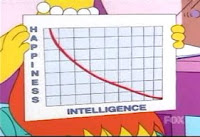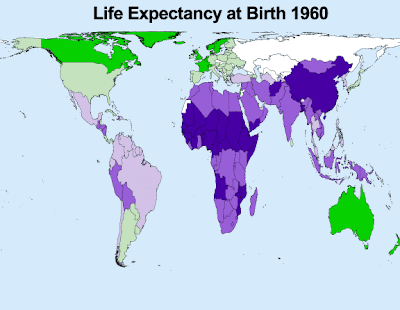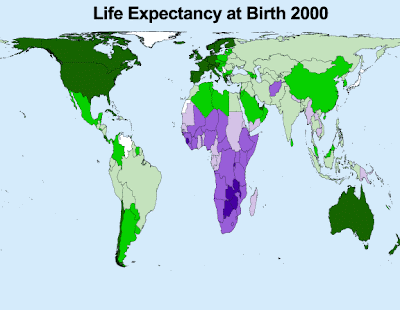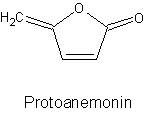Dune Part Two
-
*Plot:* In the second installment, Paul (Timothee Chalamet) and Jessica
(Rebecca Ferguson) take refuge with girlfriend Chani (Zendaya) and the
Fremen,...
4 weeks ago
Depth of Processing* is from Gregory Turco.
* see 16Feb 2009's blog
 We won't be at home on Christmas this year, so it is hard to justify spending a lot of time decorating a Christmas Tree.
We won't be at home on Christmas this year, so it is hard to justify spending a lot of time decorating a Christmas Tree. I became interested in this topic because I am reading the 1992 book Mostly Harmless, by Douglas Adams, where hero Ford Prefect hotwires a security robot so that it is always happy. The happy robot is so content that it stops chasing him and cheerfully cooperates. This got me thinking that even if people could build a self-aware robot, why would it want to do anything?
I became interested in this topic because I am reading the 1992 book Mostly Harmless, by Douglas Adams, where hero Ford Prefect hotwires a security robot so that it is always happy. The happy robot is so content that it stops chasing him and cheerfully cooperates. This got me thinking that even if people could build a self-aware robot, why would it want to do anything? Designing an artificial intelligence gives insight into the way people think, and creating an AI that feels happiness seems a long way off. AI's are not motivated by a desire to be happy, at least not yet. There does not seem to be many people working on motivation.
Designing an artificial intelligence gives insight into the way people think, and creating an AI that feels happiness seems a long way off. AI's are not motivated by a desire to be happy, at least not yet. There does not seem to be many people working on motivation. University of California at Santa Cruz has a fascinating site where they show how life expectancy has changed over the last half century. I have put two of the maps here, but there are three more on their site. (I could have pasted all four of them here, but I thought that it was sleazy to swipe their whole page. The key is on next map.)
University of California at Santa Cruz has a fascinating site where they show how life expectancy has changed over the last half century. I have put two of the maps here, but there are three more on their site. (I could have pasted all four of them here, but I thought that it was sleazy to swipe their whole page. The key is on next map.) 

 The graph at right is for females, and it shows the oldest people that were found in the population, presumably by poking though graveyards. This is from the US National Institutes of Health. These numbers are a little suspect since the curve is so smooth. It seems to show the world culture evolved uniformly.
The graph at right is for females, and it shows the oldest people that were found in the population, presumably by poking though graveyards. This is from the US National Institutes of Health. These numbers are a little suspect since the curve is so smooth. It seems to show the world culture evolved uniformly. There is a lot of analysis on the relationship of life expectancy and per capita GDP. The graph at right is from Oxfam. Small increases in GDP really increase life expectancy, but then it stops mattering so much. Life is not good until one gets to $7000 per year or so.
There is a lot of analysis on the relationship of life expectancy and per capita GDP. The graph at right is from Oxfam. Small increases in GDP really increase life expectancy, but then it stops mattering so much. Life is not good until one gets to $7000 per year or so. Finally, since the H1N1 Swine flu is around, I thought I would put up this data on how the flu of 1918 reduced life expectancy. The info is from Nature Medicine 10, S82 - S87 (2004). The epidemic was more significant than either world war. This is pretty scary since it shows how serious an epidemic can be.
Finally, since the H1N1 Swine flu is around, I thought I would put up this data on how the flu of 1918 reduced life expectancy. The info is from Nature Medicine 10, S82 - S87 (2004). The epidemic was more significant than either world war. This is pretty scary since it shows how serious an epidemic can be. In contrast, the hair growth treatment involves injecting the patient's scalp with new hair follicle cells.
In contrast, the hair growth treatment involves injecting the patient's scalp with new hair follicle cells. What is so interesting to me is how rapidly the flavor changes. It seems that oxygen rapidly reacts with the chemicals in the wine. Some enologists/wine chemists (Cacho et al) say that iron and manganese are important to how the flavor changes, presumably because they catalyze the oxidation reaction. Peuch (et al) say that the oak heartwood from barrel aging is critically important to the flavor changes. This turns the light on oak tannins -- which are a whole class of phenol/sugar compounds.
What is so interesting to me is how rapidly the flavor changes. It seems that oxygen rapidly reacts with the chemicals in the wine. Some enologists/wine chemists (Cacho et al) say that iron and manganese are important to how the flavor changes, presumably because they catalyze the oxidation reaction. Peuch (et al) say that the oak heartwood from barrel aging is critically important to the flavor changes. This turns the light on oak tannins -- which are a whole class of phenol/sugar compounds. One way this impacts the flavor is the behavior of thiols, which are --S-H groups. These smelly compounds affect the flavor of the wine. As shown in the figure, exposure to oxygen couples up the thiols into disulfide bonds, which have 24 times less odor. This makes the wine taste better.
One way this impacts the flavor is the behavior of thiols, which are --S-H groups. These smelly compounds affect the flavor of the wine. As shown in the figure, exposure to oxygen couples up the thiols into disulfide bonds, which have 24 times less odor. This makes the wine taste better. This all started with Thursday's (Oct 22) Survivor where those poor people spent five days huddled in the rain in wet clothes, mostly shivering.
This all started with Thursday's (Oct 22) Survivor where those poor people spent five days huddled in the rain in wet clothes, mostly shivering. Of course, Fall has come to Michigan and the leaves are filling up my yard which is wet with rain. Perhaps that is why I could not stop thinking about the sorry shelters that these people were in.
Of course, Fall has come to Michigan and the leaves are filling up my yard which is wet with rain. Perhaps that is why I could not stop thinking about the sorry shelters that these people were in.
 Red Baneberry contains two chemicals commonly found in the buttercup family, ranunculine and its degradation product, protoanemonin. It forms much like allicin forms in garlic when the plant is damaged and an enzyme is released -- see my previous post. Protoanemonin like allicin is an antimicrobial, specifically an antifungal.
Red Baneberry contains two chemicals commonly found in the buttercup family, ranunculine and its degradation product, protoanemonin. It forms much like allicin forms in garlic when the plant is damaged and an enzyme is released -- see my previous post. Protoanemonin like allicin is an antimicrobial, specifically an antifungal.